10 Finches in Texas (Photo & ID Guide)
Finches in Texas offer a bright splash of color and song across a variety of landscapes from backyards to woodlands. With species ranging from the common House Finch to rare winter visitors like the Pine Grosbeak, bird lovers in the Lone Star State have plenty to look for.
In this guide, we’ll introduce 10 species of finches found in Texas, including their identification features, diets, habitats, and fun facts. You’ll also learn how to attract them and how conservation efforts are helping protect these small but important birds.
Regularly Occurring Finches in Texas
1. House Finch (Haemorhous mexicanus):
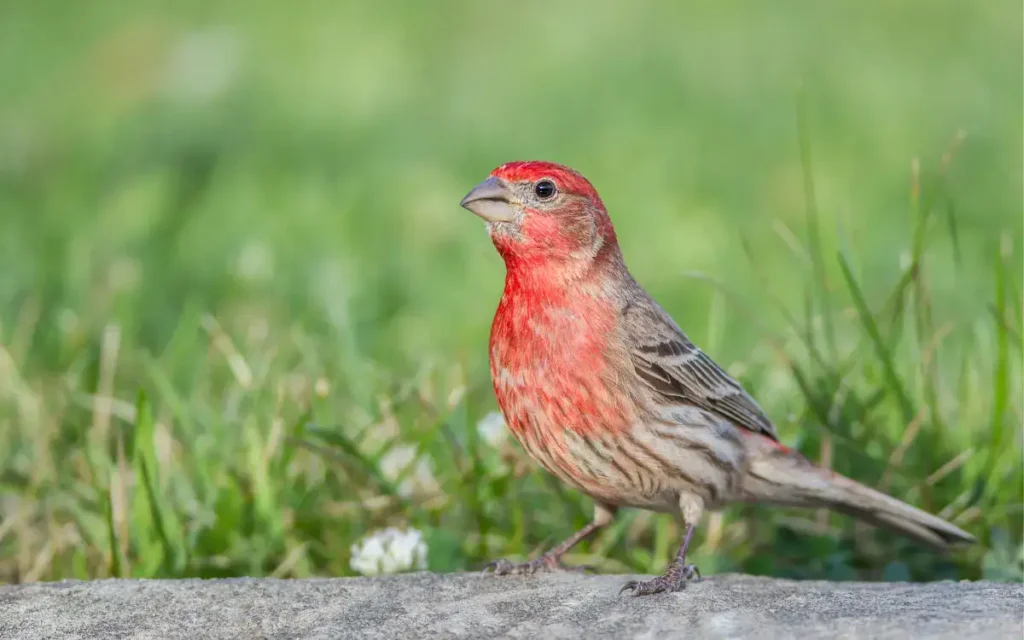
House Finches are among the most familiar backyard birds in Texas. Males have bright red heads and chests, while females are brown and streaky. These small, social birds thrive in suburban areas.
- Diet: Seeds (especially sunflower), fruits, buds
- Habitat in Texas: Cities, suburbs, parks
Fun fact: House Finches were originally from the western United States, but now they’re found all over the country!
2. Purple Finch (Haemorhous purpureus):
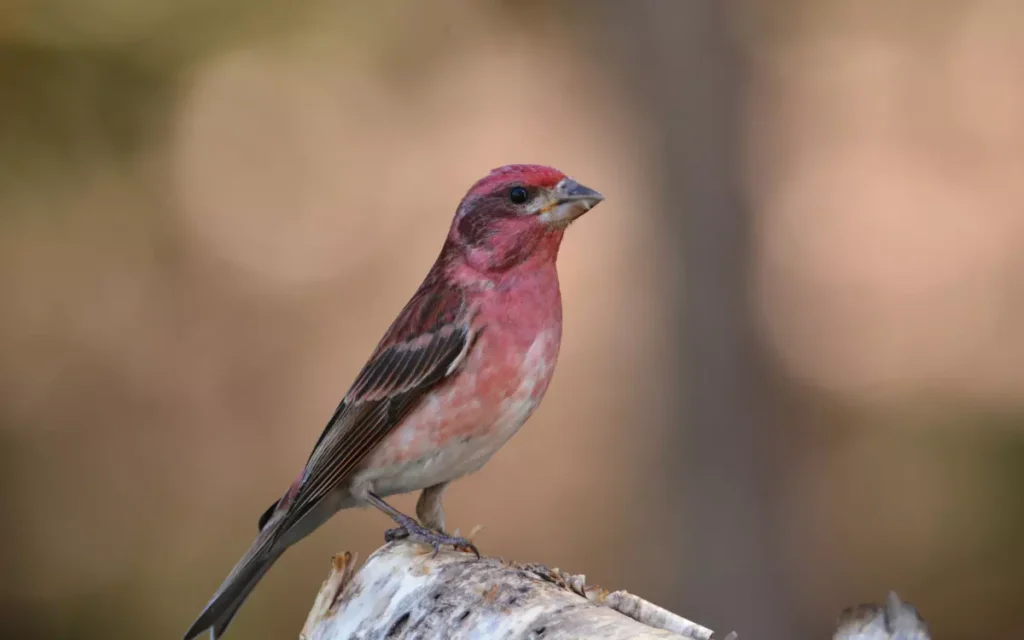
Often confused with House Finches, Purple Finches have a rosier red color and bulkier appearance. Males are red over most of their body, while females are heavily streaked.
- Diet: Sunflower seeds, thistle, fruit, insects
- Behavior in Texas: Winter visitors; prefer coniferous and mixed forests
Fun fact: Despite their name, Purple Finches are not actually purple. Their color is more of a reddish pink!
3. American Goldfinch (Spinus tristis):
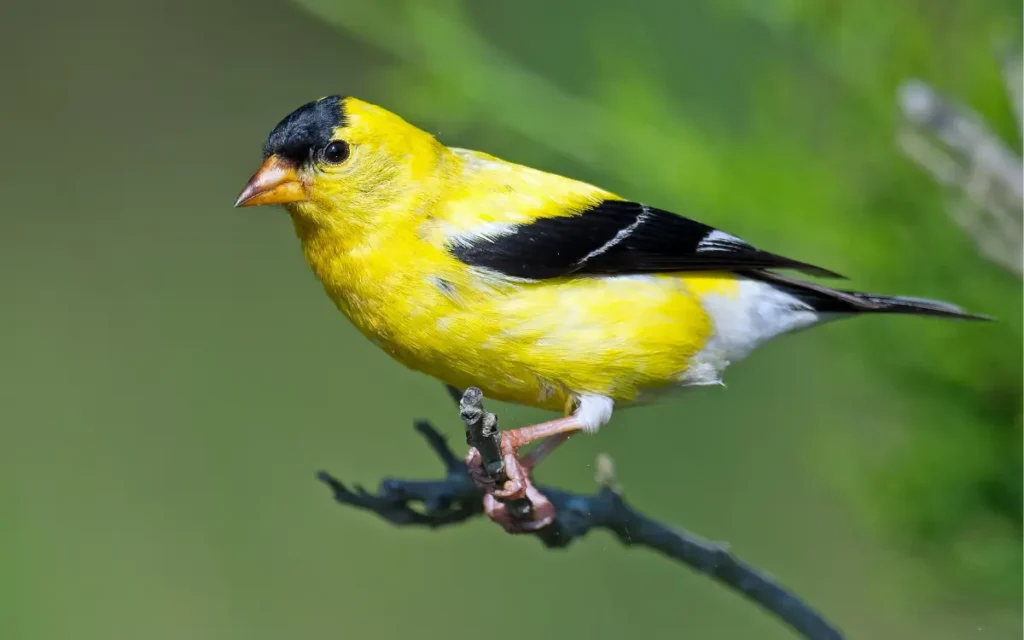
A favorite at feeders, the American Goldfinch is bright yellow in summer and olive-brown in winter. Males are especially striking with black wings and caps.
- Diet: Nyjer, sunflower seeds
- Habitat: Fields, backyards, and open areas with seed plants
Fun fact: American Goldfinches are the only finches that molt twice a year, changing from bright yellow in summer to a duller color in winter.
4. Lesser Goldfinch (Spinus psaltria):
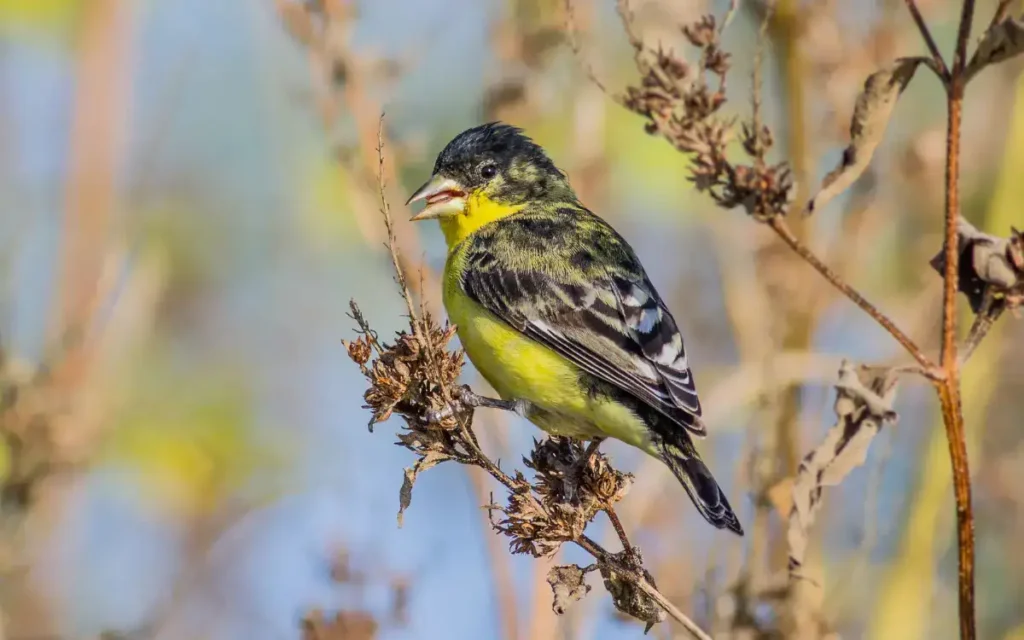
Smaller and darker than the American Goldfinch, the Lesser Goldfinch has a black back and yellow belly. Males often display a glossy black cap.
- Diet: Thistle, sunflower seeds, insects
- Habitat in Texas: Central and Southwest regions; open woodlands and gardens
Fun fact: Lesser Goldfinches can mimic the calls of other birds, making them quite the vocal impersonators!
5.Pine Siskin (Spinus pinus):
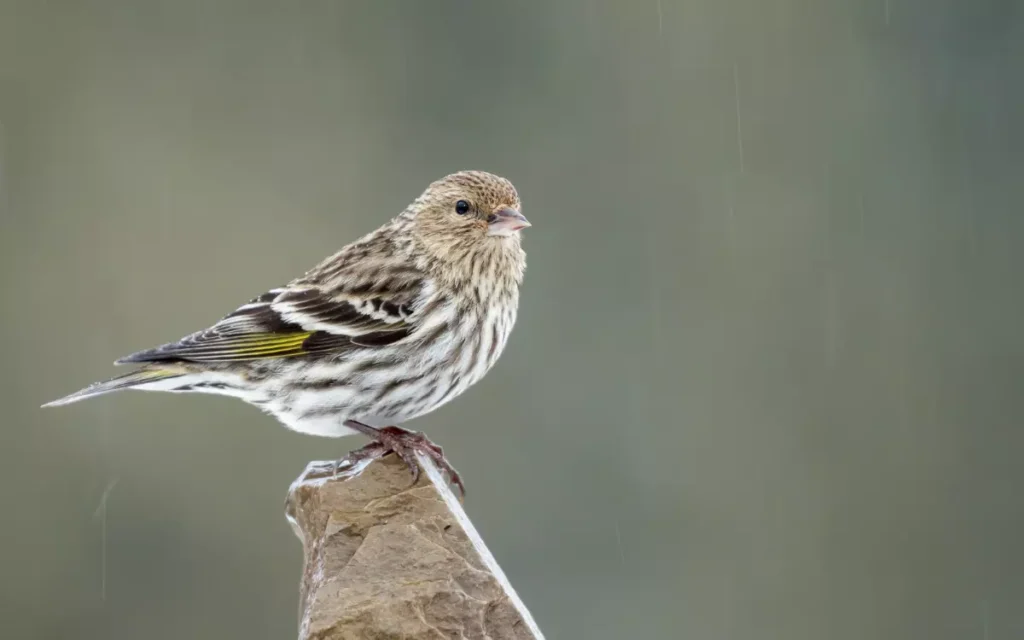
These streaky brown finches have yellow edges on their wings and tails. They’re small, social, and energetic.
- Diet: Thistle, pine seeds, insects
- Behavior in Texas: Seen mainly in winter; visit feeders and coniferous forests
Fun fact: Pine Siskins can survive cold temperatures by fluffing up their feathers to trap warm air.
6.Red Crossbill (Loxia curvirostra):
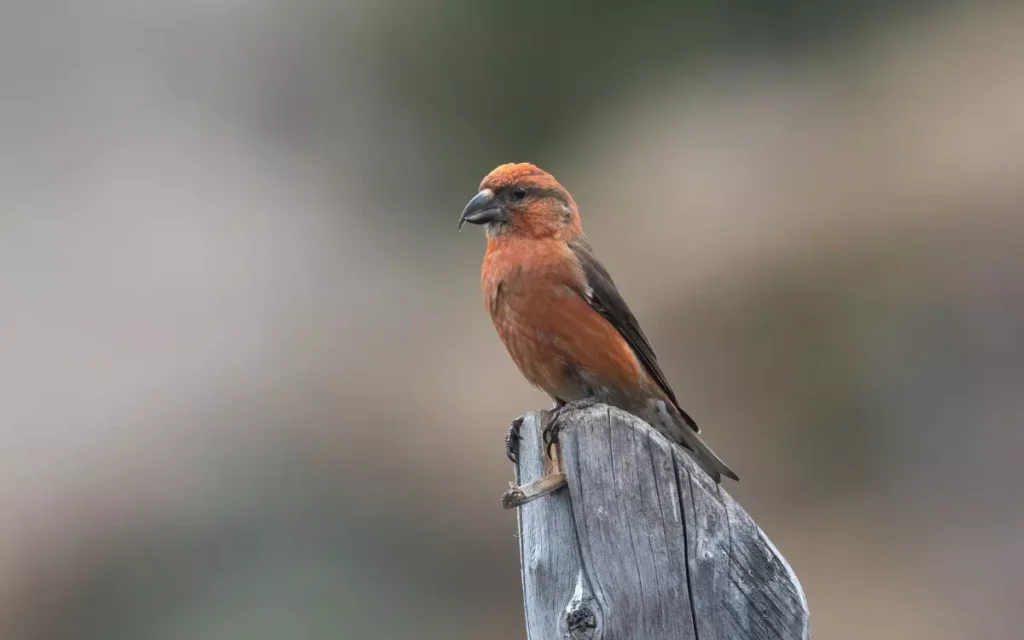
Easily recognized by their crossed bills, Red Crossbills use this unique feature to extract seeds from cones.
- Diet: Pine cone seeds, insects
- Habitat in Texas: Coniferous forests; mostly in winter
Fun fact: Red Crossbills can start breeding at any time of year, as long as there is enough food available!
7. Cassin’s Finch (Haemorhous cassinii)
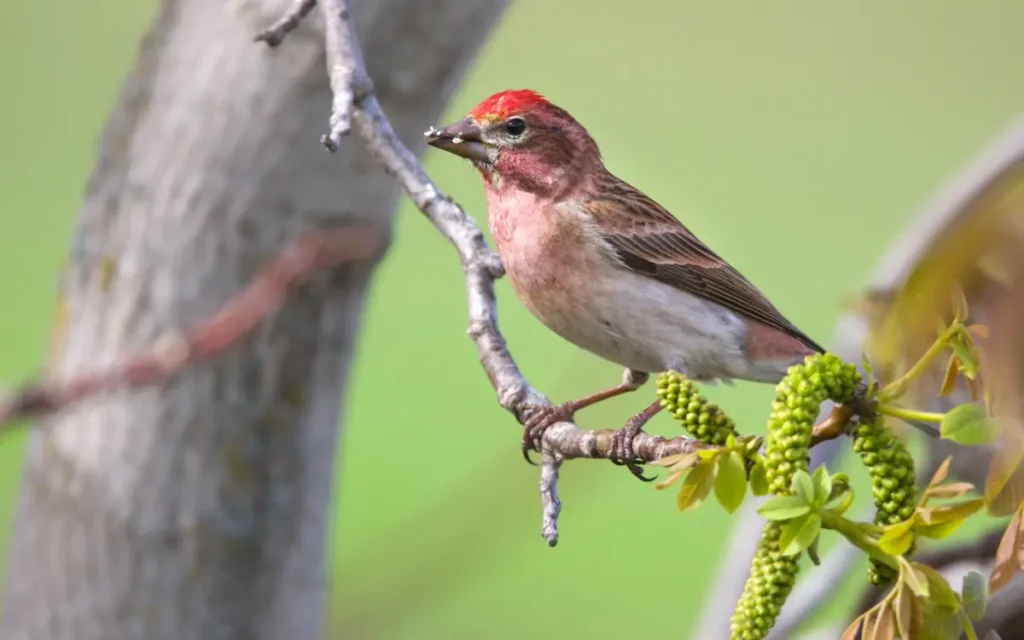
Cassin’s Finch resembles the Purple Finch but with a more peaked crown and red concentrated on the top of the head.
- Diet: Conifer seeds, berries, insects
- Habitat in Texas: Higher elevations in the west during winter
Fun fact: Cassin’s Finch can sing a variety of songs, and each male has his own unique tune!
Rare or Accidental Finches in Texas
8. Common Redpoll (Acanthis flammea):

Small and frosty-looking, Common Redpolls have red caps and black chins. They appear in Texas only during unusually cold winters.
- Diet: Seeds from birch, alder, and thistle
- Habitat: Brushy or open areas in northern Texas during winter
Fun fact: Common Redpolls can store seeds in a special throat pouch and eat them later, which helps them survive in cold weather!
9.Evening Grosbeak (Hesperiphona vespertinus):

These large, colorful finches have massive beaks. Males are yellow with black wings; females are mostly gray.
- Diet: Sunflower seeds, berries, insects
- Habitat in Texas: Rare winter visitors in northern regions
Fun fact: Evening Grosbeaks have a very strong beak that can crack open even the hardest seeds!
10.Pine Grosbeak (Pinicola enucleator):

Large and slow-moving, Pine Grosbeaks are rare in Texas. Males are rosy red, females are yellowish-gray.
- Diet: Seeds, buds, berries
- Habitat in Texas: Coniferous forests in the far north during irruption years
Fun fact: Pine Grosbeaks are known for their sweet, melodious songs, which can be heard even in the coldest months!
Read more about :
- 25 Sparrows Of Texas With Info & Photo
- 15 Blue Colored Birds of Texas Identification
- 16 Hawks in Texas (With ID Guide)
Challenges Faced by Finches in Texas:
Habitat loss, pesticide use, and food scarcity are growing threats to finches in Texas. Urban development and climate change can disrupt migratory patterns and nesting success.
What’s being done: Conservationists are working to preserve native vegetation and forest habitat, promote bird-friendly landscaping, and raise awareness about safe feeding practices. Backyard birders can help by planting native plants and keeping feeders clean.
How to Attract Finches to Your Texas Backyard
- Offer tube feeders with nyjer or black oil sunflower seeds
- Plant native flowers like coneflowers, thistles, and sunflowers
- Provide clean water and avoid using pesticides
- Keep feeders clean and refilled
These steps will invite a variety of finch species to visit regularly, especially during migration seasons.
Final Thoughts
From golden flashes of color to sweet whistled songs, finches add beauty and life to Texas landscapes. With just a little effort, you can turn your backyard into a finch-friendly space. And by learning to identify these 10 species—common and rare—you’ll become a more confident and mindful birder in the Lone Star State.






